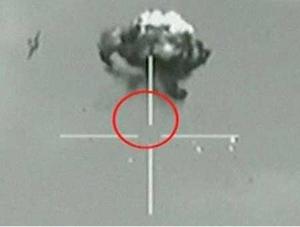DronesHezbollah drone shot down over Israel
The Israel Air Force (IAF) planes shot down a UAV over the north Negev; the UAV entered Israeli air space from the west, but Israeli intelligence says the drone was launched by Hezbollah in Lebanon, then made its way south over the Mediterranean, then turned east when it reached the water off the Gaza Strip

Video capture of Hezbollah drone shot down over Israel // Source: tinngan.vn
The Israel Air Force (IAF) planes on Saturday shot down a UAV over the north Negev. The UAV entered Israeli air space from the west, but Israeli intelligence says the drone was launched by Hezbollah in Lebanon, then made its way south over the Mediterranean, then turned east when it reached the water off the Gaza Strip.
Hezbollah used drones in the past. The Shi’a organizations launched two drones from south Lebanon into Israel before the summer the 2006 war between Israel and Hezbollah. During the war, the IAF shot down two Hezbollah explosives-laden drones before the reached their target – Tel Aviv.
Israeli surveillance tracked the drone as it made its way south over the Mediterranean and as it turned east over Gaza. Although the drone was spotted before it entered Israeli air space, the IAF did not want t shoot it down over water or over the Gaza Strip because the Israeli military would then have no access to the wreckage. Such access is important to learn more about the drone’s origin and capabilities. Even when the drone was inside Israeli air space, the IAF allowed to roam for about fifteen minutes in order to make sure it was not brought down over a populated area.
Haaretz reports that Iran has given Hezbollah several drones, and has trained members of the organization in their operation. Drones can carry more explosives than most of the rockets Hezbollah has in its arsenal, and the drone could also be targeted with greater accuracy.
The downed drone did not carry any explosives, and it is also not likely that it was taking pictures for possible future attack as it was too far for a line-of-sight communication with its operatives in Lebanon. It may have been sent into Israel to assess future entry points and to learn more about the IAF’s interception procedures.
Haaretz notes that six years after the heavy damage inflicted on it during the 2006 war, Hezbollah, having been re-armed by Iran and Syria and now to dominant force in Lebanon, may be assuming a more confrontational posture vis-à-vis Israel (note that a Hezbollah operative was behind the suicide bombing which killed five Israeli tourists in Bulgaria a few months ago). With one of Hezbollah two patrons, Bashar al-Assad, steadily weakening, the organization may also have fewer constraints on its operational freedom.
In response to the drone’s launching, and as a reminder to Hezbollah of the aerial superiority of the IAF, the Israeli military sent a few fighter jets to buzz several Shi’a villages and small towns in south Lebanon.
